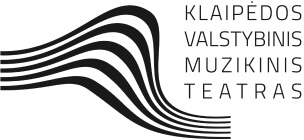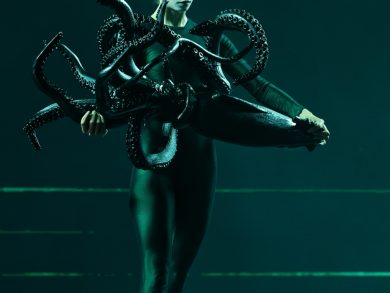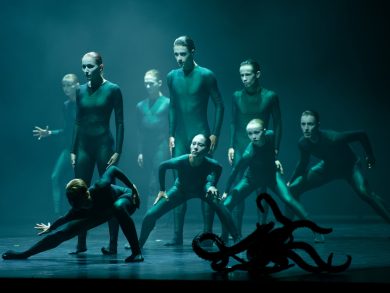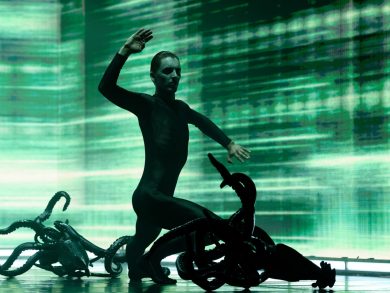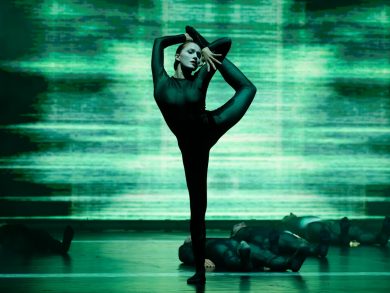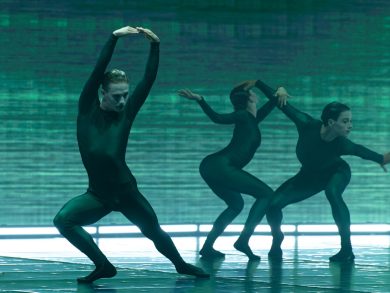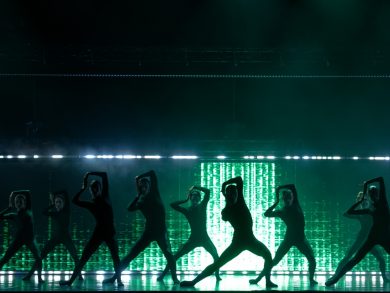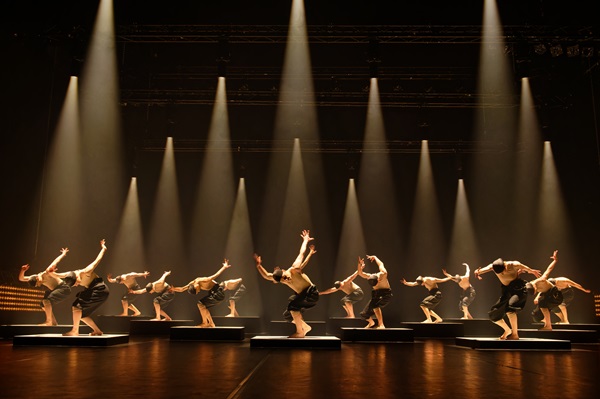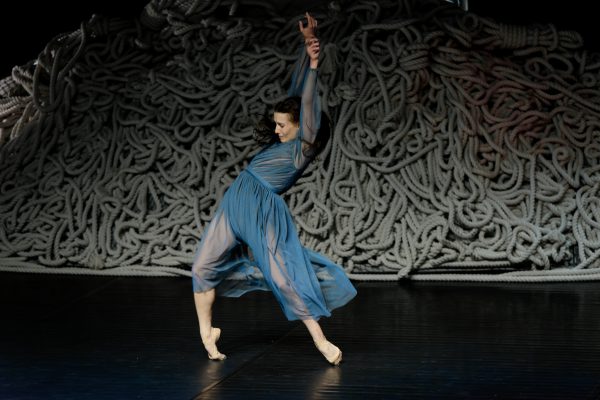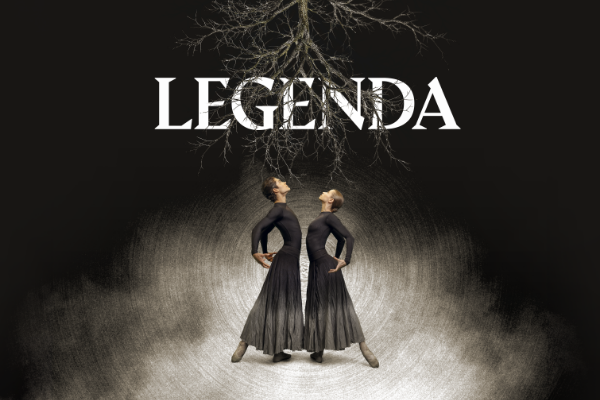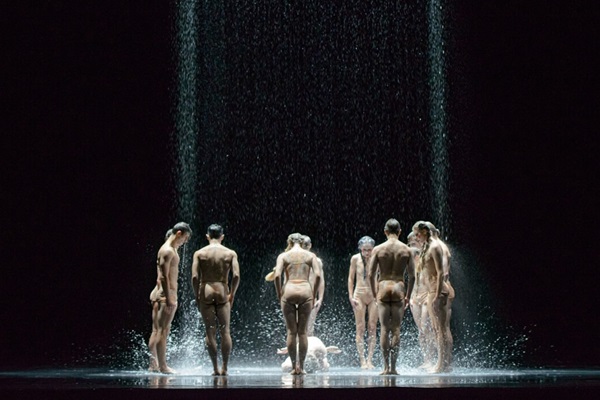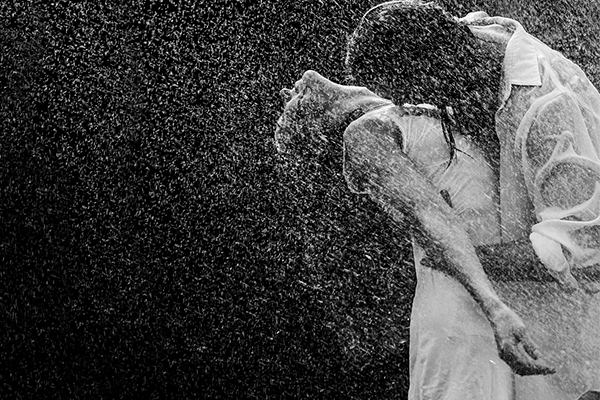FORMS
A double bill of choreographies by Douglas Lee and Gaj Žmavc
The award-winning and ever-energetic ballet company of the Klaipėda State Musical Theatre (KVMT) presents a two-part dance evening titled Forms. In recent years, the KVMT stage has become a hub for contemporary ballet, featuring works by Edward Clug, Robert Bondara, and Alexander Ekman. Now, the theatre takes a bold new step — presenting original productions created especially for the KVMT ballet company, proving that the troupe not only follows global trends, but also helps shape them.
Part I: Callisto
Choreographer Douglas Lee
In the first part of the evening, the audience will see Callisto, a dance production by British choreographer Douglas Lee, created for the 2024 Klaipėda Festival. This piece, set to music by Australian sound artist Nicholas Sávva, merges contemporary choreography, electronic music, and minimalist lighting.
“Callisto is both my stage pseudonym and the name of a Greek nymph — also the second-largest moon of Jupiter, marked by deep craters, with their ridges partially covered by ice. When discussing the music for my production with the composer, I asked for elements that would connect it to nature, the sound of water. At the same time, I wanted the audience to feel as if the action is taking place in a distant future. In this work, I aim to portray people of the future — or even another civilization.” – Douglas Lee
After completing his ballet studies in his native London, Lee joined the Stuttgart Ballet. For nearly three decades, he has lived and worked in Germany, and since 2011 has worked as a freelance choreographer across Europe, the United States, and Canada.
Part II: The Bittersweet Paragraphs of Existence
Choreographer Gaj Žmavc
The second act of the evening presents the world premiere of The Bittersweet Paragraphs of Existence, a dance production by KVMT’s ballet artistic director and choreographer Gaj Žmavc.
An emotional and poetic work, it explores the passage of time and the theme of impermanence.
“Dance is the expression of our soul — the voice of the heart. I believe we never truly stop dancing. It is who we are. The inevitability of time’s passage is deeply tied to the ballet artist’s profession and its transience. But once you touch this magnificent art, its magic never fades.” – Gaj Žmavc
In this performance, the choreographer delves into the tension between haste and stillness, action and reflection — creating an impression of a continuous flow of human experience within the context of time, as if life were a series of ever-changing chapters.
Gaj Žmavc not only choreographed the piece but also designed the costumes and composed the music for string instruments. The orchestral score was arranged by Vladimiras Konstantinovas, lighting design was created by Edvardas Osinskis.


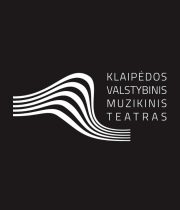

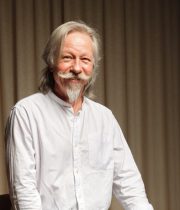
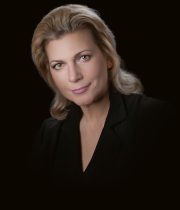

Callisto
Callisto is an abstract dance piece for nine dancers. Inspired by ideas, dreams and visions of the sea, the dance reverberates with its different movements and properties.
Callisto is one of Jupiter’s moons. It was discovered by Galileo Galilei and named after a nymph from the Greek Myth who was a spirit of nature. It is believed to have a secret sea hidden under its outer solid layer. Thus, the ballet aims to combine the imagery of water, and the spirit of the sea, and to project it onto the futuristic landscape in a world once shrouded in mystery.
The audience is transported to the icy expanses of Callisto where the surface ripples with the ebb and flow of an enigmatic population. The dancers embody the very essence of water and the alien rituals of these other worldly population. Their movements are sometimes fluid, mirroring the undulating currents of the sea, but they are also dynamic, reflecting the machinations of the electronic score. The piece explores the theme of ceremony and custom through the rituals and interconnectedness of life.
The score, “Hydræia,” crafted with a blend of vintage analogue synthesizers and modern digital processing, illuminates the vast waters of Callisto, with waves of boundless reverb.
Douglas Lee
The bittersweet paragraphs of existence
Dance is an extension of our soul, a voice of the heart. I think we hardly ever stop dancing. It is a question of being. The unequivocal reality of passing time is profoundly bound to our profession. But once touched by this beautiful art, the magic never seems to fade away.
The bittersweet paragraphs of existence unveils a poetic dancescape that can be perceived as a retrospective window through which we can observe, from a distance, a series of intimate human portrayals. The work subtly touches on the themes of time and the impermanence of all things, exposing the beauty, power, and fragility of the moment’s elusive nature.
This new ballet is set to my new score for chamber orchestra, solo violin and solo cello.
Gaj Žmavc
